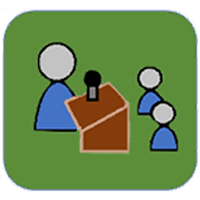Events

Invader impact on soil ecosystems – what every restoration practitioner should know
Webinar recording. Description: Plant invasions cause dramatic shifts in plant communities and ecosystem processes. While these changes are obvious aboveground, less is known about changes belowground. Focusing on the most significant invaders in our area in the Intermountain West of the United States, this seminar will highlight how spotted knapweed (Centaurea stoebe), leafy spurge (Euphorbia…

Effects of policy change on wildland fire management strategies
Webinar recording. In 2009, new guidance for wildland fire management in the United States expanded the range of strategic options for managers working to reduce the threat of high-severity wildland fire, improve forest health and respond to a changing climate. Markedly, the new guidance provided greater flexibility to manage wildland fires to meet multiple resource…

Inclusivity in cooperative extension programming, with an emphasis on natural resources and climate change
Webinar recording. Description: Through a case study from Washington, DC, participants will learn how to get feedback from historically underrepresented groups and tailor cooperative extension programs to people of different races, ages, and academic backgrounds. Some people, such as minorities and those from under-educated and lower income backgrounds, are typically excluded from conversations surrounding the…

Improved maps of disturbance and recovery across the US
Webinar recording. In this webinar, RMRS research ecologist Sean Healey will discuss improved techniques for mapping forest disturbance and recovery across the United States with remotely sensed data.

The Cohesive Strategy in 2020: Dynamic adaptation in a novel world
Workshop recordings. Description: The event will provide leaders intent around the Cohesive Strategy moving forward and context for 2020 implementation to date. Presenters: Vicki Christiansen, Chief, US Forest Service; Jeff Rupert, Director, Office of Wildland Fire, DOI; George Geissler, State Forester, Washington State DNR. Additional presenters will be announced in the coming weeks based on…

Fire behavior and ecology of the shrub steppe
Webinar recording. Alison Dean, Central Oregon Fire Management Service and U.S. Bureau of Land Management, and Marth Brabec, City of Boise, will provide an overview of historic and modern fire behavior in different communities of the sagebrush biome, shrub steppe ecology, and post-fire restoration considerations.

Wildfire mitigation, preparedness, response, and recovery
Webinar recording. Description: Throughout the past 5 years, Gila County has been faced with record breaking wildfire activity. Learn how Gila County Emergency Management works with their Public Safety partners to overcome the challenges that come with Wildfire season. Acquire skills about planning tools such as the Gila County Community Wildfire Protection Plans (CWPP) and…

Threatened and endangered species in shrub steppe
Webinar recording. Pygmy rabbits, greater sage grouse, songbirds, and Umtanum desert buckwheat…oh my! Learn how fire and land management can impact key threatened and endangered species and the top three things to take into consideration before taking action where these species call sage brush their home.

Wildland fuels a primer for concerned citizens and grazers
Workshop recording. The California Range Management Advisory Committee, an advisory body to the California Natural Resources Agency under the Board of Forestry and Fire Protection, is co-hosting a virtual workshop with the California Fire Science Consortium to discuss the use of prescribed livestock grazing as a sustainable fuel reduction and environmental management tool. Three separate…

Know your smoke
Webinar recording. In this webinar, RMRS research physical scientist Shawn Urbanski and fire ecologist Duncan Lutes will discuss the current state of the science on wildland fire smoke emissions, including pollutants present in smoke, methods for quantifying emission flux, existing datasets, tools, and models, and deficiencies in current scientific understanding.

